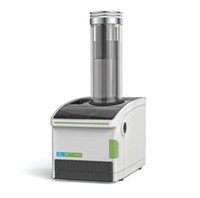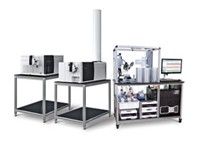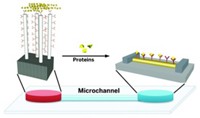Advertisement
Grab your lab coat. Let's get started
Welcome!
Welcome!
Create an account below to get 6 C&EN articles per month, receive newsletters and more - all free.
It seems this is your first time logging in online. Please enter the following information to continue.
As an ACS member you automatically get access to this site. All we need is few more details to create your reading experience.
Not you? Sign in with a different account.
Not you? Sign in with a different account.
ERROR 1
ERROR 1
ERROR 2
ERROR 2
ERROR 2
ERROR 2
ERROR 2
Password and Confirm password must match.
If you have an ACS member number, please enter it here so we can link this account to your membership. (optional)
ERROR 2
ACS values your privacy. By submitting your information, you are gaining access to C&EN and subscribing to our weekly newsletter. We use the information you provide to make your reading experience better, and we will never sell your data to third party members.
Analytical Chemistry
Microchip Blood Test Helps Track Chemical Exposure
Biomonitoring: Microfluidic device isolates and separates compounds for mass spec analysis in a new approach to tracking chemicals
by Jyllian Kemsley
June 8, 2015
| A version of this story appeared in
Volume 93, Issue 23

A microfluidic chip can quantitate as little as 50 femtograms of a perfluorinated compound (PFC) in a 1-µL sample of human blood plasma, report Pan Mao and Daojing Wang of Newomics, a company based in Emeryville, Calif. (Environ. Sci. Technol. 2015, DOI: 10.1021/acs.est.5b01442). To evaluate long-term exposure to persistent pollutants such as PFCs, rapid analysis of small samples is necessary. Mao and Wang’s miniature silicon-based chip incorporates a solid-phase extraction (SPE) column for sample cleanup, a mixer and trap to concentrate analytes, and a liquid chromatography column to separate the analytes before funneling them into a mass spectrometer for detection. The researchers demonstrated the analytical capability of the device by testing human blood plasma—the liquid component of blood that normally carries blood cells and platelets—that was deproteinated before injection, as well as by using a NIST reference material containing several PFCs. The sample run time from analysis through mass spec data collection takes an hour. Changing the extraction column material could allow for on-chip processing of whole blood samples, such as from a finger prick, and changes to the mixer geometry could reduce the assay run time, the researchers suggest.





Join the conversation
Contact the reporter
Submit a Letter to the Editor for publication
Engage with us on Twitter